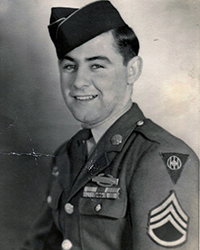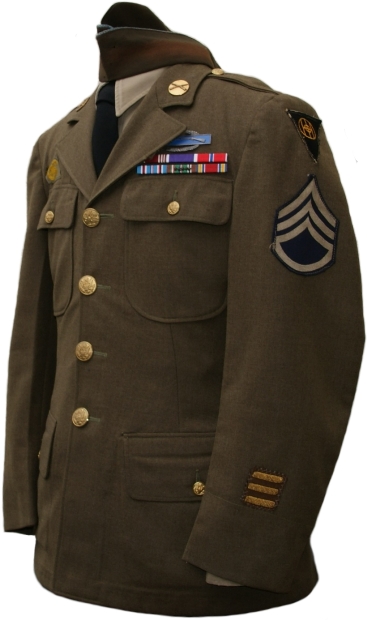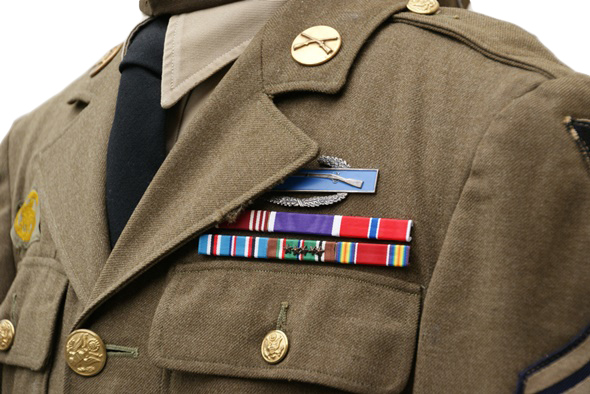WW2 Service Coat
S Sgt William S. Spriggs - C Company, 329th Infantry Regiment
This uniform in my collection was issued to Bill Spriggs after his induction into the army and worn by him throughout his career. When given the choice at the end of his service to keep his Ike Jacket or this four pocket coat he chose the latter. He can be seen wearing this particular coat in his 1946 portrait after his return home.
Bill Spriggs donated this uniform jacket, including his original overseas cap, to my collection as a birthday present. It still has all his original sewn-on insignia, including a beautiful set of bullion overseas bars. The ribbon bar is a replacement and matches the bar he is wearing in the studio portrait.
Staff Sergeant William Samuel Spriggs
Staff Sergeant
William Samuel Spriggs

Staff Sergeant William Samuel Spriggs
William Samuel Spriggs was born on November 18, 1925 in Ogdensburg, New York as the second child to Joseph J. (1898-1968) and Gertrude (Countryman) Spriggs (1898-1963) who was Canadian born. Bill volunteered for the service at the age of 17 and was inducted on March 3, 1943. On July 23, 1944 he was assigned to C Company, 329th Infantry Regiment as a replacement. He would serve with this unit as a rifleman for the remainder of the war fighting in Normandy, Brittany, Luxembourg, the Hurtgen Forest, the Battle of the Bulge and eventually the Elbe Bridgehead. In October 1945 he was transferred to the 8th Armored Division to be sent back home. After his honorable discharge he returned home to the banks of the St. Lawrence River. As a high school dropout he had to work here and there before deciding to get a College Degree. At his retirement, he was Assistant Administrator of the St Lawrence Seaway. Bill Spriggs passed away on December 12, 2016 in his home in Massena, New York.


The 'four-pocket' coat
The WW2 service coat is most commonly known among collectors as the 'four-pocket' Class A Jacket. The US army first switched to an open collar uniform in 1926 and this design changed little in the years leading up to WW2. Because the jacket was part of the field uniform the jacket had a pleated back for ease of arm movement. The jacket was replaced in 1941 by a new cotton field uniform and some of the earlier features like the belt hook or back pleats were eliminated in later revisions to the model. This particular jacket was made in 1941 and is of the final model which still retained the pleated back.